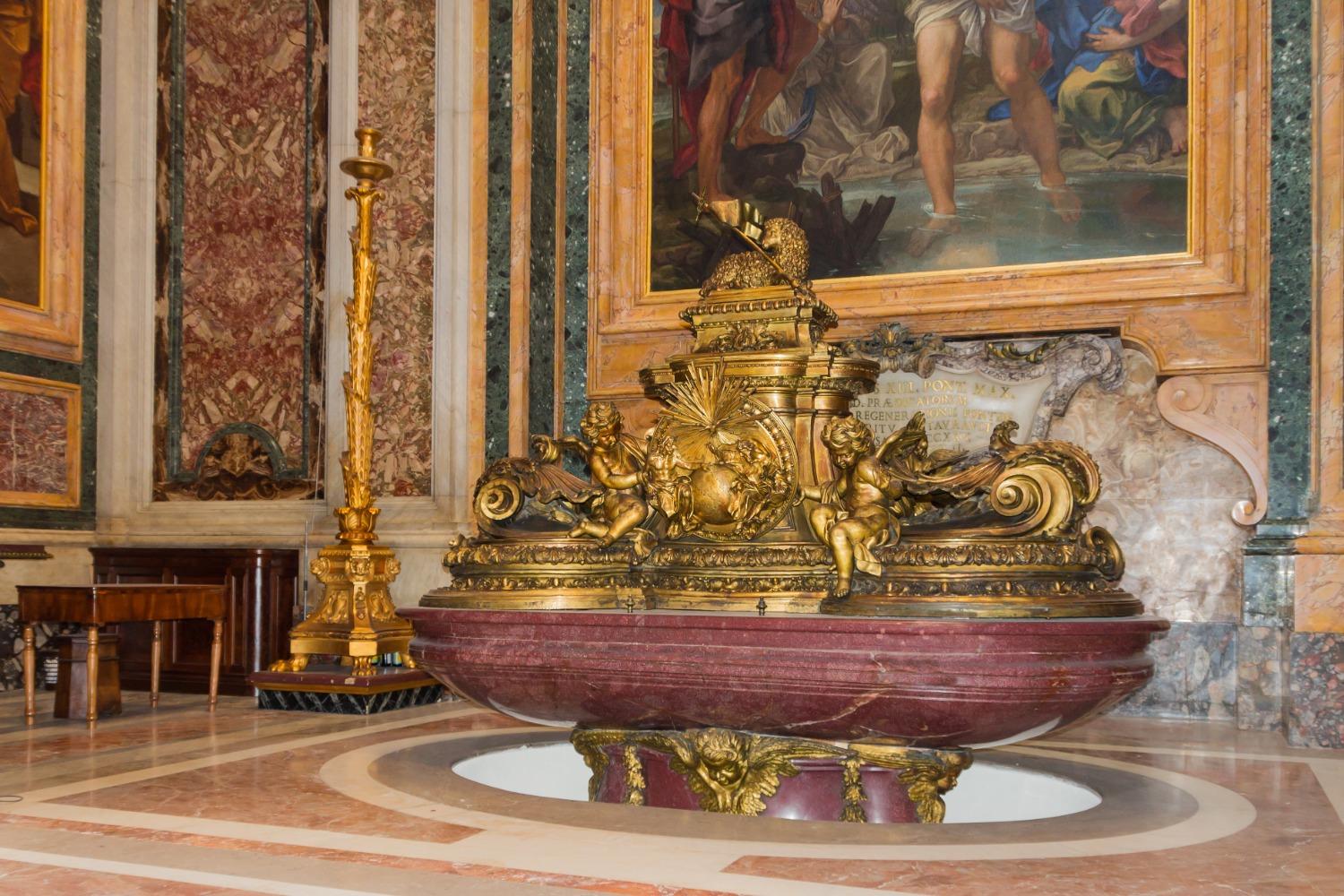
The vastness of St. Peter’s Basilica in the Vatican can at first blind and overwhelm the observer with its magnitude and incredible beauty. Art, angels, and arches combine to deliver a piercing blow to the senses as one enters the sacred structure.
As the eyes adjust, one can begin to appreciate the many details that went into the construction of such a marvelous temple. In the center of the rear part of the nave is a simple maroon disk in the floor. A casual observer would simply walk over it as a mere part of the wonderfully marbled floor. This disk, however, provides one of the most important pieces of the basilica both historically and spiritually.
The disk is made of a precious stone called porphyry. This stone was mined historically in ancient Egypt. The supply was always scarce, and it has now been mined out of existence. Because of its relative scarcity, deep red wine color, and remarkable durability, porphyry was united in the Roman mind to the idea of divinity, especially with regards to the emperors. The royal shade of purple of the stone made it a distinction to signal the imperial divinity, separate from the common man.
We’ll return to that disk in a moment. Facing the high altar, let’s now turn immediately to our left and walk to the baptismal font. Note the same porphyry that constitutes the font. The tub-shaped font is the lid from the sarcophagus which was the final resting place of the Emperor Hadrian, entombed just down the street in what is now Castel Sant’Angelo.
Why was this porphyry sarcophagus chosen for the baptismal font? St. Paul and the Fathers of the Church understood well that the person submerged in the font of baptism died with Christ in the Red Sea waters to sin and is reborn in Christ himself. This baptismal regeneration turns death on its head, just as the sarcophagus lid is upside down. In baptism, the Christian participates in Christ’s conquering of death, reversing the ancient curse.
In baptism, one does not simply become freed from the guilt of sin but is united to the person of Christ through his human nature into his Divine nature. No longer slaves, the baptized become actual heirs of the Heavenly Kingdom of God the Father, participants in his only-begotten Son. The mere man or woman baptized becomes royalty in Christ the King, divine through participation in Christ, and an inheritor of eternal life with God and in God.
Let's walk back to the porphyry disk. What other royal and divine symbol belongs in such a nondescript place? It is even said that Charlemagne himself was crowned emperor on it in AD 800. But now it is found unmarked in the back of the church. By our baptism into Christ we are common no longer, but rather have become royalty, endowed with unsurpassable dignity.
Indeed, in medieval times, the funerals of royalty would begin with the pallbearer knocking on the entrance of the church, saying, “Open the doors for the King!” The porter inside would reply, “He is not known here.” The process would go on for a few more injunctions to let in the royal person with all their accomplishments, only to be rejected. Finally, the pallbearer would say, “Open the door for this poor Christian man.” The doors would fly open and the funeral liturgy would commence.
Death—the great equalizer from sin—is matched and raised to a new greater equalizer: the radical and incomparable royal dignity conferred in baptism. The red porphyry of emperors and kings is no longer beyond the dignity of the common Christian pilgrim.
Photo Attribution A: "Baptismal Font of Saint Peter's Basilica, Vatican City," by Jebulon is licensed under CC0 1.0.

The First Draught
To receive the Weekly Update in your inbox every week, along with our weekly Lectio Brevis providing insights into upcoming Mass readings, subscribe to The First Draught.
